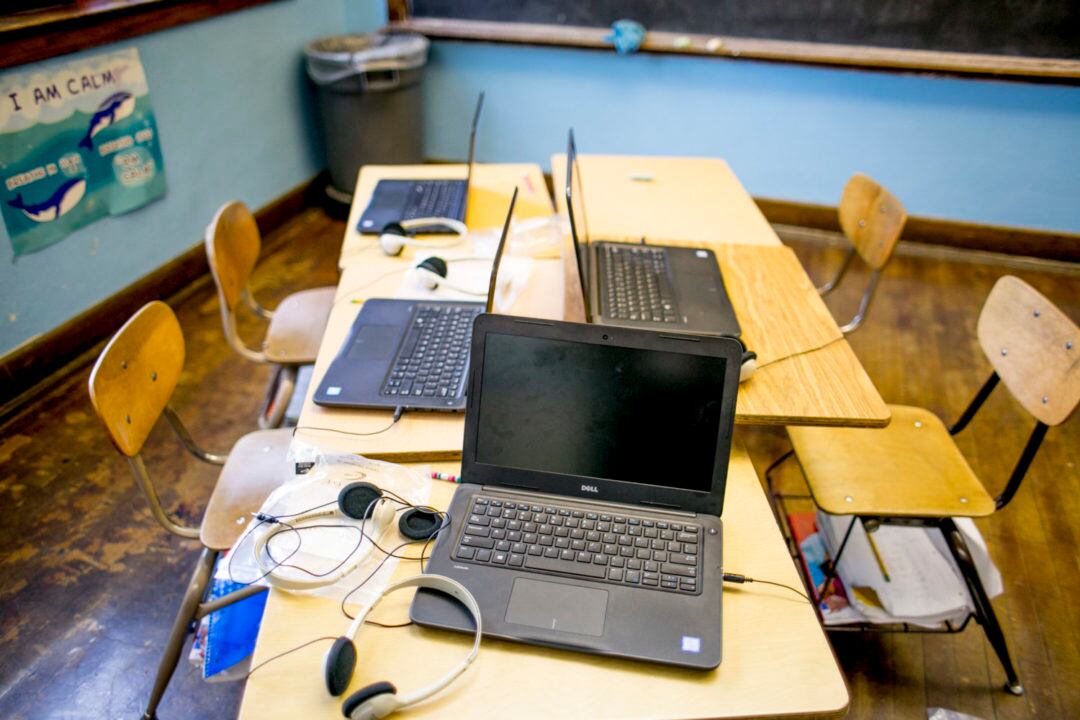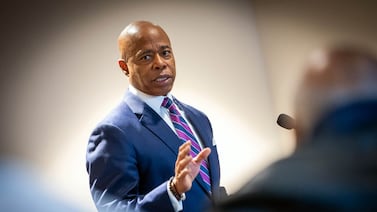All 94,700 Shelby County Schools students could have individual laptops or tablets with internet access by fall under a technology plan being considered by Tennessee’s largest district.
Superintendent Joris Ray said Monday he is awaiting the recommendation of a committee of school and community officials as well as teacher, student, and parent representatives. But he expects to give board members a “solid plan” in the next couple weeks.
In the meantime, district staff has made some initial assumptions that call for training teachers by the end of the summer and putting devices in the hands of students next school year. According to a presentation Monday to board members, that could include purchasing tablets for students in prekindergarten through second grade and laptops for students in third through 12th grade. The documents also include providing students with internet access, a case for their device, and insurance that includes two free replacements.
The board presentation outlined five technology models. The district now is leaning toward a program in which students still learn and engage with teachers through printed material as well as with the same digital tools on the same digital platforms.
Digital technology is being embraced by school districts around the country as a way to combat the learning loss caused when school buildings closed two months ago to curb the spread of the coronavirus. Shelby County Schools buildings have been closed since March 13 and will remain closed the rest of the academic year.
Since then, school leaders have been tackling how to equitably shift to remote learning in a district where many students live in homes without digital devices or internet connections. Outside of some online learning guides, most lessons so far have been provided via paper packets and televised educational programs. The work is not required or graded.
“We’re very worried about the time students have been out of school for the last few weeks,” Ray said, adding that officials are exploring possibly extending the school day for instance.
Chief Academic Officer Antonio Burt said that early national COVID data show that younger students will be especially susceptible to learning loss, especially in math. And that’s on top of the typical summer learning slide that districts already struggle with.
Shelby County Schools has been slower to complete plans to purchase devices than smaller districts like Knoxville and Chattanooga as Memphis officials have stressed the need to get it right.
The new digital proposal relies heavily on spending from the $49 million in federal funding the district is slated to receive from the Coronavirus Aid, Relief, and Economic Security (CARES) Act which school officials say actually will be closer to $36 million to $40 million once local charter and private schools get their share. The one-time relief money is meant to help schools recover from the pandemic and transition students to learning at home.
Ray estimated the district will spend up to $30 million on devices from the emergency funds. The remainder of the relief money will be spent on ensuring teachers and students return to safe environments, he said. That could include extra cleaning in schools or providing masks.
The Shelby County Schools digital presentation also mentioned fundraising efforts. Board documents reference an effort last month by a Detroit coalition that raised $23 million in three weeks to purchase 50,000 laptops for Detroit district students. But the board document implies that such an effort would be tougher here because the other entities had already put in requests for philanthropic support.
A new expedited timeline anticipates the school board voting on a final plan by the end of the month, approving purchases in a special meeting on June 2, and devices being delivered by early August. District officials said they expect to have the funds by the end of June.
Last year the district outlined a multiyear strategy that would have phased in one handheld device and internet access for every student by 2025. But the closing of school buildings underscored the need to get students learning online much sooner.
The district only has about 30,000 to 40,000 take-home devices in its inventory, less than half of what it needs for each student to get one. Two weeks ago, the district distributed laptops and hot spots to 140 high school students in Project Graduation, a program that allows students to improve failing grades.








